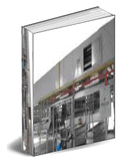Problems with milling of rubber chemical dispersions for medical gloves

Manufacturer:We are a medical glove manufacturer and have been plagued with countless nightmarish problems with some problems with our bead mills. The final grind and particle size of our rubber chemicals (accelerators, ZnO, sulphur and antioxidants) have been very erratic since we began making our own dispersions. We would appreciate if you could give us some guidance for us to conduct our investigation.
JohnWoon:The variables you need to look into are dwell time, beads to mill-base ratio, temperature, and dispersion formulation.
Generally, accept may be for ZnO, the longer the milling time (dwell time), the finer the grind. Charging of the mill-base at a slower speed and/or reducing the pumping rate would have similar effect. The quantity of your beads in relation to that of the base should be accessed and predetermined for each chemical, for instance, a higher or lower quantity of the beads could lead to good or bad results. If you have only a small charge, a large quantity of beads would only result in an increase in your energy cost unnecessarily to drive the dead weight!
Check the temperature. For some dispersions like those encountered in the paint industry, the advice is to run at maximum temperature allowable before the chemistry of the ingredients start to change while others require lowest temperatures possible.
Last but not least, be careful in the formulation design for the dispersions in terms of particles re-agglomeration, phase separation and viscosity. A wrong formulation would not work even with a wide spectra of dwell times and bead:mill ratios.
I suspect that your problem is due to misguided formulations since the milling part could be quite straight forward if you follow the instruction of the mill manufacturer. To cut short your study and investigation time and therefore your cost, guide formulations for all the chemicals you need for your gloves can be made available to you if you e-mail me your request. Needless to say, you'd get lesser nightmares a lot quicker this way!
You are at the site for answers and solutions to all your problems in natural rubber latex processing and manufacturing of medical gloves, condoms, catheters, baby teats and baby pacfiers.

















































.jpg)
.jpg)



.jpg)
.jpg)
.jpg)
.jpg)
.jpg)
.jpg)
.jpg)
.jpg)
.jpg)
.jpg)
.jpg)
.jpg)
.jpg)
.jpg)
.jpg)
.jpg)
.jpg)
.jpg)













































4 Comments:
Dear Sir,
Recently I faced problem with Sulphur dispersion which after 72 hours ball milling does not showing any differance.the particles are still in the undispersed form.I tried to add more dispersing agent,KOh,Nonionic emulsifier but still there is no change.
is it beacuse of over grinding or still it requires milling.
Suggest me time for ball milling required for following materials.
Normal Sulphur
Zinc Oxide White seal
ZDEC
ZDBC
Wingstay L
ZBEC
TMQ
DPG
Zinc oxide in active form
Sulhur in fine particle size form.
regards
anand
Hi Anand,
Please email me your email address and I'd contact you directly.
Best Regards
John Woon
Latex Consultant
JW (JohnWoon) Latex Consultants (SA0052392-P)
http://latexconsultants.blogspot.com
e-mail: woonsungliang@yahoo.com.sg
We are manufacturers of NR latex based rubber thread in India.
Our major portion of the product is white coloured thread.
We are actually struggling to get good white colour for our threads.
Can you please give me an idea about the pigments used for NR latex? We are using TiO2 now which i not showing any improvement.
Also please let me know about any other latex which is combatible with NR latex.
regards,
Rajesh P.N
Hi Rajesh,
Please contact me at woonsungliang@yahoo.com.sg
Post a Comment
<< Home